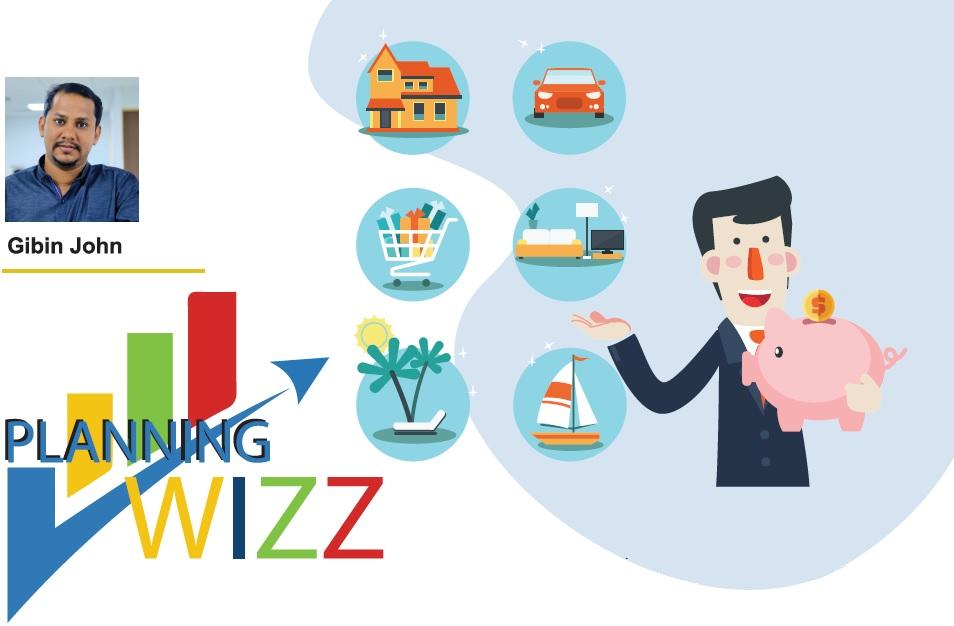 Geojit’s Investment Analyst, Gibin John, replies to an IT professional’s query on how to plan and achieve his goals especially his children’s education and marriage.
Geojit’s Investment Analyst, Gibin John, replies to an IT professional’s query on how to plan and achieve his goals especially his children’s education and marriage.
I am an IT professional aged 43 and my wife is 41 years old. We have a son (13 years) and a daughter (9 years). My wife too is an IT professional who works from home and she earns an average of Rs.30000 a month. After all the deductions, I get a take-home salary of Rs 90,000 every month.
My Expenses
- Monthly expense is Rs.30000
- An amount of Rs 9000 goes from my salary every month to the provident fund.
- An amount of Rs 8000 goes to various endowment insurance policies and I hold Rs. 2lakh medical insurance coverage for the whole family with an annual premium of Rs 6000.
- Home Loan EMI is Rs 7000. Have eight more years to pay back.
- Gold loan of Rs.2 lakhs was taken to buy a car and this is renewed by paying interest every year.
- Investing Rs.10,000 every month in various mutual fund SIPs chemes. Current value of the investment is Rs6 lakhs.
- Have a bank fixed deposit of Rs. 5 lakh.
Life Goals
- Higher studies of the children. Aim to accumulate Rs. 5 lakh for each.
- Plan to save Rs 15 lakh for my daughter’s marriage, which is expected once she turns 25 years.
- Want to exchange my car within next 5 years and purchase one worth Rs. 7 lakh.
To achieve all the above goals, I request you to prepare a financial plan for me.
Gibin John who is a certified financial planner replies:
Proposed Financial Plan
After analyzing your present investments, I can say that you are earning a good amount that has not been fully utilized nor wisely invested. This happened due to lack of proper financial planning. So, you need to plan your finances at the earliest with the right investment strategy, to achieve your goals. To make the right investments, it is always important to connect your investments with your life goals.
As you said, your life goals are your children’s education, marriage and buying a new car. But you have not mentioned about an indispensable goal, i.e. retirement. People working in private sector without adequate retirement benefit should plan for their post-retirement income, for peaceful retired life.
Firstly, let’s allocate some amount as an emergency fund for yourself and family. This amount will help you to meet any contingency expenses. It is ideal to set aside money for the next 6 months in case of emergencies. In your case, this amount is Rs. 3 lakh. You can allocate this amount from your existing bank deposit. If you withdraw from this fund don’t forget to top-up the amount.
As mentioned, you want to create a corpus of Rs. 5 lakh each for both your children’s higher studies.For your son to start his higher studies only 4 years are left. So, after considering an inflation rate of 8% for the next 4 years, you will actually require a corpus around Rs. 7 lakh. For this, you can allocate Rs.6 lakh which you have already invested in mutual funds.It is assumed that you will earn an average of 9% returns from this investment.As you move towards your targeted corpus, based on the performance of these schemes,within two years you should shift this investment to other schemes that are less risky.For your daughter’s higher studies, considering an inflation rate of 8% for the next 8 years, you will have to create a corpus of Rs. 9 lakh by then. This amount can be earned by investing an amount of Rs. 6500 every month towards an equity-oriented mutual fund. Return assumption here is 10%.
For your daughter’s marriage after she turns 25, you have 16 more years to invest. Though you plan to save Rs. 15 lakh, after calculating the 6%inflation,the amount you would require will be Rs. 38 lakh after 16 years. For you to create this corpus, you can invest an amount of Rs 9200 every month towards an equity- oriented mutual fund. Your existing SIP could be associated with this goal.
After 5 years, let’s assume a Rs. 7 lakh worth car will cost Rs. 10 lakh. In such case, you will have to set aside Rs 14000 a month for this. As it is a short-term investment, you can put this money either in a debt mutual fund or in any other fixed return scheme that are less risky. We could assume an average return of around 7% from this investment.
Till now, for achieving your family oriented goals, the monthly investment requirement is Rs.29700.
Now, let’s have a look at how you can save for your post-retirement days, which you have not mentioned in the letter.But as an adviser I would like to throw light on this inevitable issue. If you plan to retire by 57 and assuming a life expectancy of, say,80 years, we should first calculate, the amount you would need every month to take care of your living expenses after your retirement. We can find this by inflating your current monthly expense. Your current monthly expense is Rs 25000. If we factor-in an inflation of 6% in future, you would require Rs.57000 per month after your retirement,to maintain the same standard of living.To earn this amount monthly,you will have to accumulate a corpus of Rs. 1, 14,00,000 to lead a comfortable retired life.You can earn this amount by investing Rs 32000 every month in an equity-oriented mutual fund.
Since you are a taxpayer, you can consider investing up to Rs. 1.5 lakh in ELSS funds to save your tax under Section 80 C of Income Tax Act.
If you have employer’s health insurance,the current health insurance cover of Rs. 2 lakh will be sufficient for the whole family.Otherwise, you must have a minimum family floater cover of Rs.5 lakh. In the unfortunate event of your absence, to secure your family and for them to meet their needs, a term life insurance is a must. For that, you can take a term insurance cover of Rs 1 crore which will have a yearly approximate premium of Rs 25000 (Around 1200 per month).
As time goes, your needs and goals may change. So, it is very important to review your plan every quarter or at least half-yearly.
We wish you all good health and prosperity!









